To create a legal greywater garden for your tiny house, you need to follow specific state rules. Arizona and New Mexico allow small systems without permits, while Florida and Washington require permits and strict guidelines. Use drought-tolerant native plants like yucca, buffalo grass, and fruit trees, but always check local rules first. If you keep these tips in mind, you’ll be well on your way—more details on the best plants and regulations await you.
Key Takeaways
- Native, drought-tolerant plants like yucca and buffalo grass are generally permissible for greywater gardens across states.
- Edible plants such as fruit trees and berries may be allowed if greywater is properly treated and system regulations are followed.
- Restrictions often prohibit planting edible crops directly in greywater contact zones to prevent contamination risks.
- Many states recommend using regional, well-adapted plants to ensure safety and compliance with local greywater regulations.
- Always verify state-specific regulations before selecting plants for tiny-house greywater gardens to ensure legal and environmental compliance.
Greywater Regulations in Arizona
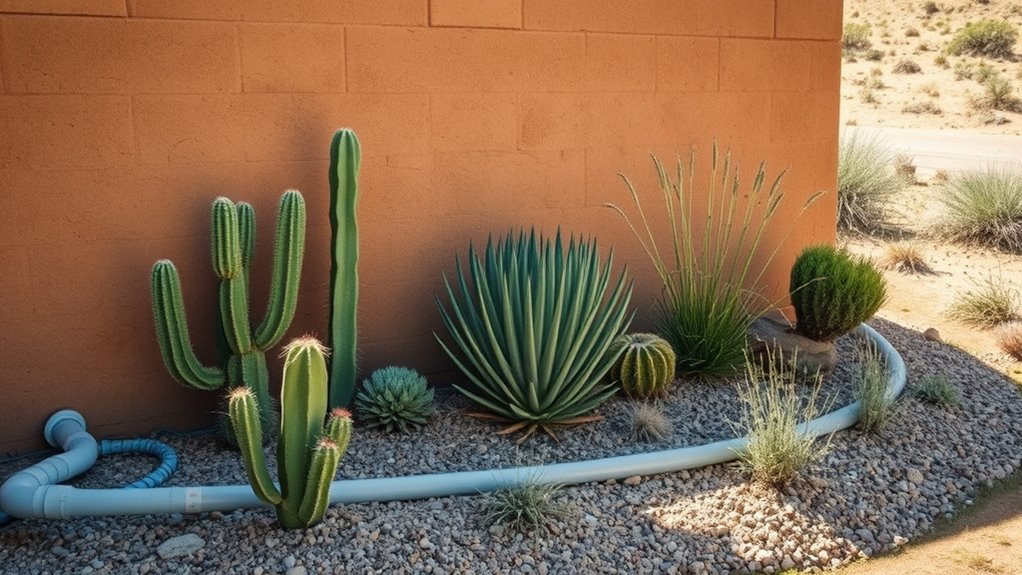
In Arizona, greywater regulations are in place to protect public health and the environment while encouraging water conservation. You’ll need to follow state guidelines when installing and maintaining greywater systems to guarantee safety and compliance. Permits are often required, especially for complex plumbing or distribution networks. The regulations specify water quality standards that greywater must meet for safe reuse in irrigation or flushing toilets. Local jurisdictions might impose additional rules, so check with your municipality. Proper installation according to standards prevents contamination and system failures. Regular maintenance and inspections are essential for ongoing safety. Keep detailed records of your system’s setup, upkeep, and inspections to stay compliant. These regulations aim to promote sustainable water use while safeguarding public health. The new groundwater standards reflect the latest science and federal regulations and further support efforts to ensure safe water reuse practices. Staying informed about regulatory compliance requirements helps prevent legal issues and promotes community trust.
New Mexico’s Permitting Guidelines for Greywater Use
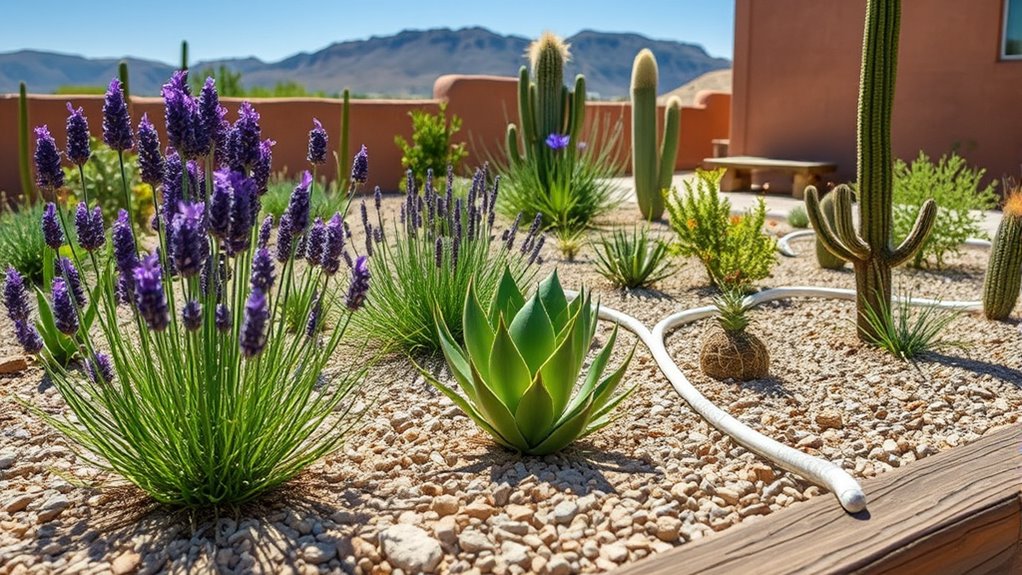
In New Mexico, you don’t need a permit for greywater systems that discharge less than 250 gallons daily from your home, making small-scale projects more accessible. However, you must design your system to prevent contamination, ensuring overflow discharges into sewer or treatment systems and avoiding runoff beyond your property. Properly designed greywater system can be an effective way to reuse water and reduce water bills. Adhering to restrictions like avoiding ponding, spray irrigation, and contact with people or animals is essential for safe, compliant greywater use. Additionally, the state’s efforts to protect water quality and habitat through legislation support responsible greywater management practices.
Permitting Thresholds and Limits
Understanding New Mexico’s permitting thresholds for greywater use is essential for compliant and safe system installation. If your system handles less than 250 gallons daily for residential use, you don’t need a permit. This exemption covers greywater used for gardening, composting, or landscape irrigation. However, if your system exceeds this limit, you must obtain a permit from the New Mexico Environment Department. All modifications to greywater systems require plumbing permits from the Construction Industries Division and must meet standards outlined in the Uniform Plumbing Code. The state’s regulations aim to protect public health and the environment while promoting efficient greywater management. Properly managing greywater is critical to prevent environmental contamination and health hazards. Variances can be granted by the Environment Department under specific conditions to ensure safety and compliance.
System Design Restrictions
To guarantee your greywater system meets New Mexico’s regulations, you must carefully follow design and siting restrictions. Confirm the system is authorized only for your residence and located on your property. It must not impair the capacity of your existing waste system and be sited outside floodways to prevent damage and contamination. Maintain a vertical separation of at least five feet above the groundwater table to protect water sources. Avoid installing within 100 feet of domestic wells or 200 feet of public water supplies. Use clear labels on greywater tanks indicating they contain non-potable water, and ensure piping is distinctly marked. Prevent access to covered tanks and design the system to prevent runoff beyond your property, safeguarding public health and the environment. Additionally, understanding nutritional content can help in making environmentally conscious decisions related to water and plant health.
Contamination Prevention Measures
Ensuring your greywater system complies with New Mexico’s regulations involves adhering to specific contamination prevention measures. First, you need to follow the permit requirements: no permit is needed for systems handling less than 250 gallons per day for household gardening or landscape irrigation. Second, your system must meet standards set by the Uniform Plumbing Code and avoid contaminating water sources. Third, greywater use can be restricted, but variances may be granted if they protect public health and the environment. Fourth, you must implement best practices such as covering storage tanks to prevent mosquito breeding, managing overflow to avoid runoff, and clearly marking greywater pipes as non-potable. These steps help ensure your greywater garden operates safely and legally. Additionally, proper treatment methods, such as filtration and disinfection, are recommended to reduce bacteria and odor, especially if greywater is reused frequently or stored for more than a day. Incorporating contamination prevention measures can further safeguard your system from potential hazards and ensure compliance with local regulations.
Florida’s Restrictions on Outdoor Greywater Applications
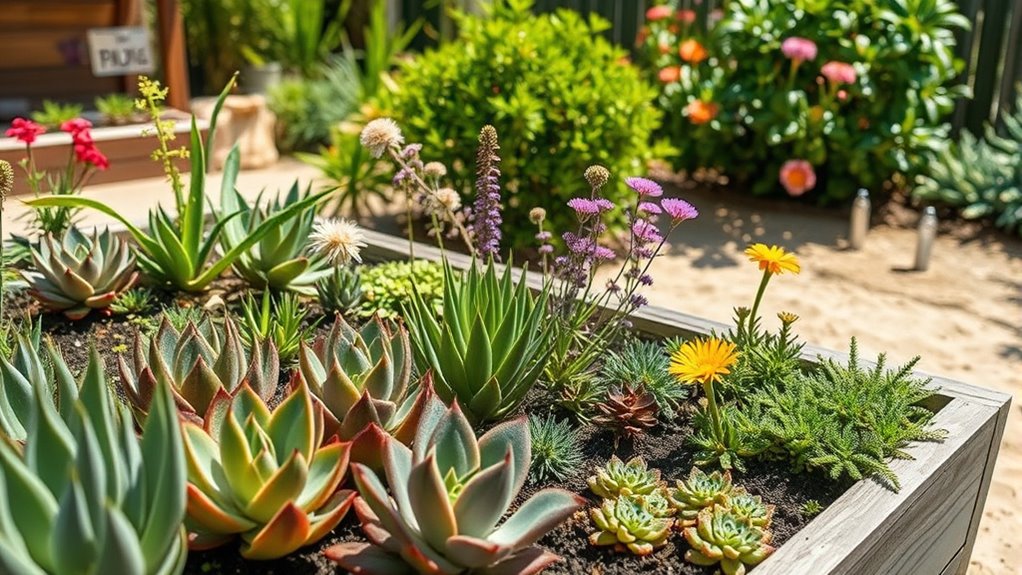
Florida imposes specific restrictions on outdoor greywater applications to protect the environment and public health. You must guarantee greywater used outdoors meets quality standards and system maintenance requirements to prevent contamination. Seasonal watering limits and restrictions on runoff help avoid environmental damage, especially near surface water bodies. Systems should prevent human contact and mosquito breeding risks. Local codes vary, so check jurisdiction rules before installation. Proper filtration, disinfection, and system design are mandatory to comply with state regulations. Here’s a summary of key outdoor greywater restrictions:
| Aspect | Requirement |
|---|---|
| Water Quality | Must meet source and maintenance standards |
| Runoff Prevention | Design to avoid reaching surface waters or potable water |
| Contact & Mosquito Risks | Systems must prevent human contact and mosquito breeding |
Additionally, understanding regulatory compliance is crucial for ensuring greywater systems adhere to all legal requirements and protect public health.
Washington State’s Permitting and Usage Restrictions
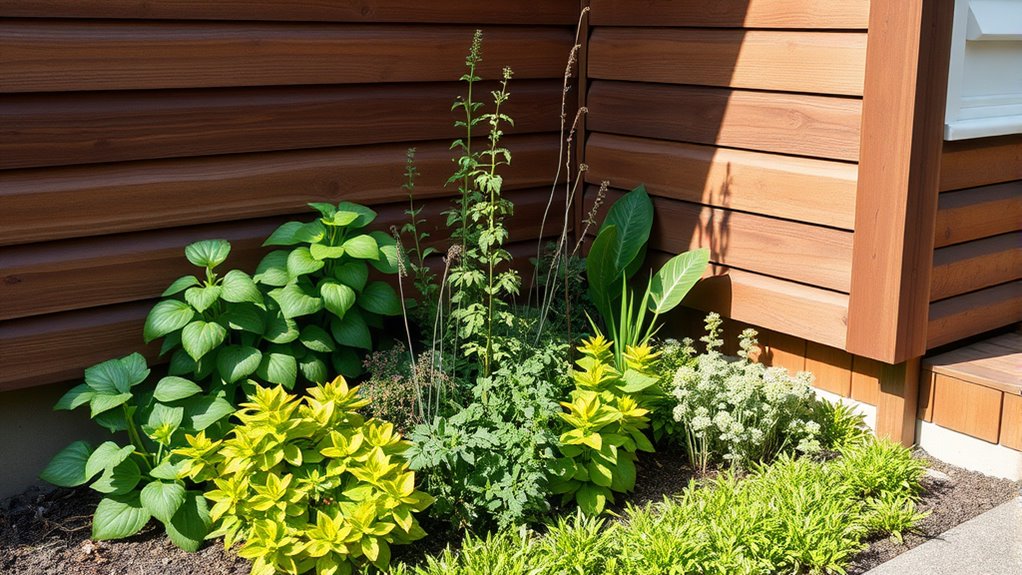
In Washington State, getting your greywater system approved involves following specific permitting steps and staying within local regulations. You need to verify your greywater use is limited to subsurface irrigation and avoid contact with edible plants. Knowing which vegetation is approved can help you design a compliant and effective greywater garden. Understanding local codes is essential for ensuring your greywater system meets all legal requirements and functions safely. Additionally, consulting with local health departments can provide guidance on permissible plant lists and system installation standards.
Permitting Process Overview
Managing Washington State’s permitting process for greywater systems requires careful attention to application requirements and local regulations. First, you must submit a complete set of plans stamped by a Washington State Professional Engineer, including details like mechanical rooms, overflow systems, and treatment components. Second, your application is reviewed by the local Authority Having Jurisdiction (AHJ), which responds within 28 days about completeness. Third, permits for Tier 2 and Tier 3 systems need approval from the local health officer before installation, with adherence to WAC Chapter 246-274. Fourth, your permit application must include riser diagrams, system schedules, and documentation on filtration, pumps, and shutoff valves. Some jurisdictions, like San Juan County, also require public notification before permits are issued. Additionally, understanding the specific local requirements and maintaining clear communication with local authorities can significantly streamline the permitting process and ensure compliance with all applicable regulations.
Restrictions on Greywater Use
Washington State imposes strict restrictions on greywater use to protect public health and the environment. You can only apply greywater subsurface, avoiding surface contact, and only on plants that do not produce edible parts touched by greywater. Use must stay within typical household flow limits: 60 gallons per system daily, with a maximum of two systems (120 gallons). Local health officers may require registration or additional review, especially for multiple systems. Greywater cannot contain toxic chemicals, hazardous wastes, or infectious materials like diapers. You must prevent surface pooling, runoff, and contact with humans or animals. Systems must stay within property boundaries unless you get landowner permission. Backflow prevention is essential, and hazardous waste disposal is prohibited. Local authorities may enforce stricter rules or inspections.
| Restriction Area | Requirement |
|---|---|
| Application Method | Subsurface only |
| Water Content | Limited to household flows (max 60 gallons/day per system) |
| Plant Contact | No contact with edible plant parts |
| Prohibited Materials | Toxic, hazardous, or infectious wastes |
Approved Vegetation Guidelines
- Use native plants adapted to local conditions.
- Select low-maintenance, pest-resistant options.
- Choose plants that thrive in various soil types.
- Prioritize plants with aesthetic appeal for visual interest.
- Consider incorporating drought-tolerant native plant species to reduce water usage and support local ecosystems.
Oregon’s Licensing Fees and Regulatory Controversies

Oregon’s water quality regulation system faces ongoing debates over licensing fees and their impact on stakeholders. Proposed 3% fee increases in 2025 aim to maintain current service levels, but statutory limits restrict these hikes to either administrative cost rises or 3%. This tight cap raises concerns about funding adequacy, especially as fees support staffing and permit processing. Recent increases, including a 3% hike in 2024 and a 60% jump in 2013, highlight the contentious nature of fee adjustments. Stakeholders worry that fee hikes could burden businesses relying on water quality permits, while regulators emphasize the need to prevent staffing cuts that threaten permit backlogs. The advisory committee reviews these proposals, balancing fiscal sustainability with economic and environmental responsibilities.
Containment and Application Restrictions Across States
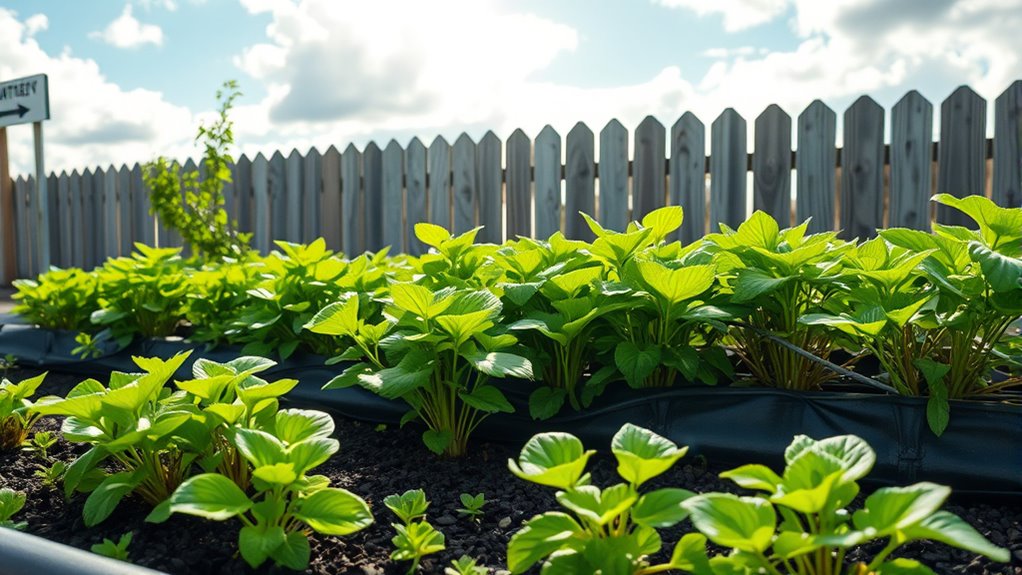
You need to be aware of each state’s rules for on-site containment, as many require tanks or filters to prevent solids from escaping. Restrictions often prohibit ponding or runoff to protect groundwater and neighboring properties. Additionally, regulations specify the depth and location of graywater application to minimize health risks and environmental impact. Compliance with local regulations is essential to ensure safe and legal graywater use in tiny-house gardens. Proper containment methods are vital to prevent unintended discharge and maintain compliance.
On-site Containment Requirements
Have you ever wondered how regulations differ across states regarding greywater containment for tiny-house greywater gardens? Each state has unique rules, affecting how you manage on-site containment. Here’s what you need to know:
- Some states, like Arizona, don’t require permits for flows under 400 gallons daily.
- Others, like New Mexico, waive permits for under 250 gallons, but have specific site rules.
- Systems must prevent leakage, with tanks fitted with traps, vents, and overflow safeguards.
- Proper disposal involves overflow into sewer systems or treatment units, ensuring no unauthorized discharge occurs.
- States often specify requirements for tank materials and access restrictions to prevent contamination and unauthorized use.
These rules aim to protect groundwater and prevent contamination while ensuring safe system operation. Always check your local regulations to stay compliant and avoid issues with your greywater system.
Restrictions on Runoff and Ponding
Managing greywater on tiny-house properties involves more than containment; strict restrictions also govern runoff and ponding to protect neighboring land and ecosystems. Greywater must stay within your property boundaries, with no runoff beyond the lot lines to prevent contamination (NM, OH). If you need to apply greywater on another property, you’ll require a recorded easement (OH). Methods must minimize contact with people and pets, and discharges to streams or ponds are prohibited to avoid pollution (NM). Ponding or standing water on the soil surface is forbidden, so your system must ensure proper infiltration without pooling. Covered tanks are mandatory to prevent mosquito breeding, and greywater can’t be stored over 24 hours. These rules ensure safe, environmentally friendly greywater management across different states. Regulations vary by state, so consulting local authorities is essential to ensure compliance.
Depth and Location Regulations
Depth and location regulations for greywater systems vary considerably across states, ensuring that applications remain environmentally safe and do not contaminate groundwater or neighboring properties. These rules are designed to prevent contamination by specifying safe distances from wells and water sources, as well as proper installation sites. 1. In New Mexico, greywater must be applied at least 5 feet above groundwater and outside floodways to prevent contamination. 2. Arizona permits systems under 400 gallons daily without permits, implicitly controlling depth and volume. 3. Washington enforces strict design standards, requiring proper containment and installation depths to protect the environment. 4. Florida bans outdoor greywater use near water bodies, restricting surface application and proximity to natural water sources. These regulations focus on site-specific placement, containment, and application depth, controlling how and where greywater can be safely reused. They help prevent runoff, ponding, and potential health risks, ensuring greywater stays contained and environmentally responsible.
Plants Approved for Greywater Gardens in Arid Regions
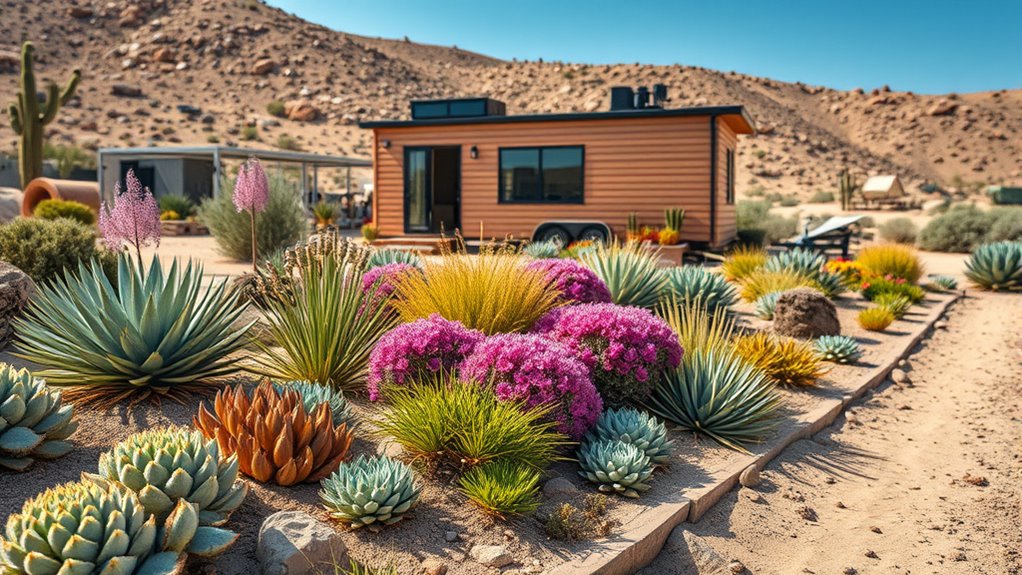
In arid regions, selecting plants that thrive with minimal water and can tolerate greywater irrigation is essential for successful greywater gardens. Drought-tolerant native plants like yucca, buffalo grass, and Bermuda grass are excellent choices, as they endure dry conditions and greywater use. Fruit trees such as certain varieties of apple, pear, and citrus can handle periodic greywater irrigation with proper basin placement. Shade trees like melaleuca and bottlebrush provide microclimate benefits and tolerate greywater salinity. Edible shrubs and vines, including grapes, blackberries, and elderberries, thrive in dry zones with consistent greywater supply. Low-maintenance options like tillandsia, Liriope, and resilient turf grasses complete the list. These plants ensure your greywater garden remains sustainable, productive, and well-adapted to arid conditions.
State-Specific Plant Lists and Usage Recommendations

Different states have specific guidelines and recommended plant lists for greywater gardens, especially in arid and regulated regions. To help you navigate, here’s a quick overview:
- California favors native, fire-resistant plants like Big Saltbush and Coyotebrush, along with ornamentals such as lavender and rosemary. Fruit trees like citrus and olives are suitable, but avoid leafy greens and root vegetables due to salt buildup concerns. Plant condition and maintenance are crucial factors in fire safety, as well-maintained plants are less likely to ignite.
- Florida restricts outdoor greywater use, focusing on indoor systems. No specific plant lists are provided, and edible plants outdoors aren’t recommended.
- Georgia permits greywater use mainly for trees and taller crops, with restrictions on root vegetables.
- Washington and Oregon emphasize fruit trees, drought-tolerant natives, and ornamentals, advising against leafy greens and root crops for greywater application.
Navigating Local Ordinances and Regional Variations
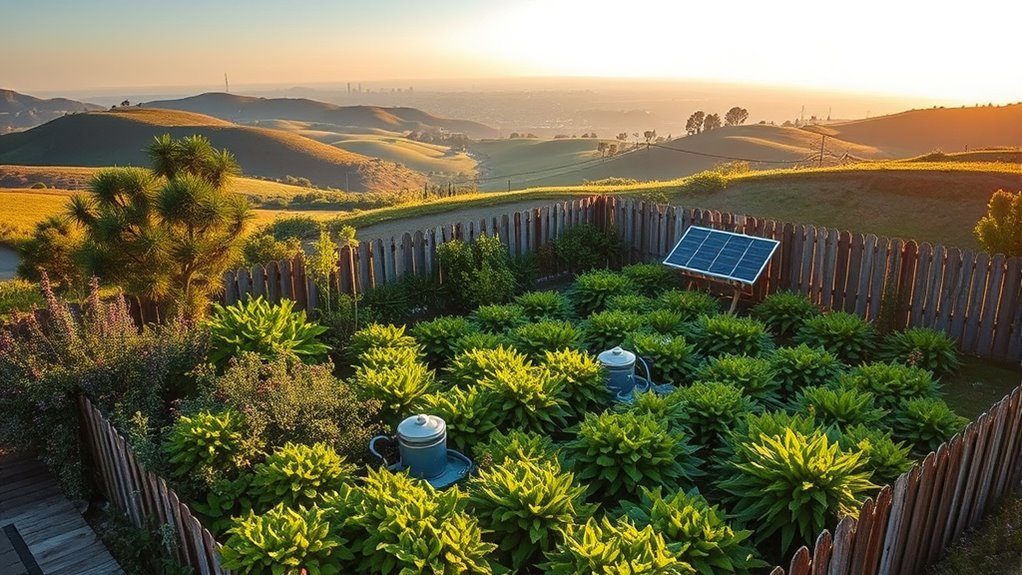
Managing local ordinances and regional variations can be complex because greywater regulations often differ considerably from one jurisdiction to another. Many states delegate regulation authority to municipal or county governments, creating a patchwork of rules even within the same state. Some areas require permits for small systems, while others exempt them below certain flow thresholds. Local codes may impose siting rules, like prohibiting greywater systems in floodways or requiring vertical separation from groundwater. Regulations focus on preventing runoff beyond property lines and reducing contact with stored greywater. Permitting and system size limits vary—states like Arizona and New Mexico allow small, permit-free systems, while others like Oregon and Washington have performance-based standards and fees. Regional bans or restrictions on outdoor greywater use also influence how you can design and operate your garden.
Best Practices for Compliance With State Greywater Laws
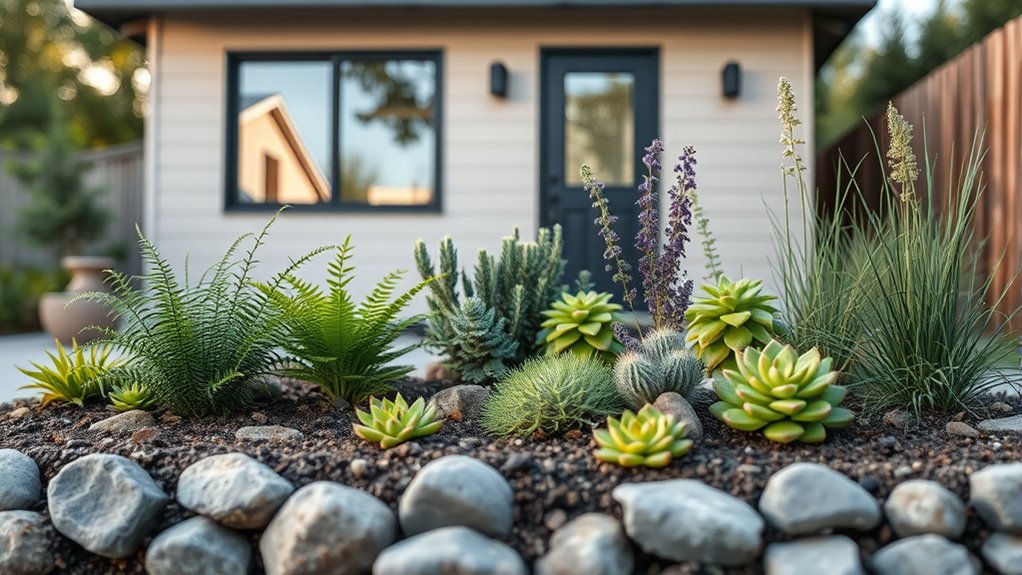
Understanding permit requirements is essential to guarantee your greywater system complies with state laws and avoids fines or system removal. Many states have specific thresholds and conditions for permits, depending on flow volume and system type. To stay compliant, consider these best practices:
- Verify if your system’s size and flow rates qualify for permit exemptions or require approval.
- Use greywater only for approved purposes like outdoor irrigation, avoiding blackwater sources such as kitchen sinks.
- Ensure greywater piping is clearly labeled as non-potable and separated from potable water.
- Install overflow provisions that redirect excess water to approved treatment or sewer systems. Researching local regulations can help determine if your system falls under simplified or more stringent requirements. Following these steps helps you meet legal standards, protect your system, and promote safe, eco-friendly greywater reuse.
Frequently Asked Questions
Can I Use Greywater for Vegetable or Fruit Gardening in My State?
You wonder if you can use greywater for vegetable or fruit gardening. It depends on your state’s regulations and safety measures. In some states, greywater use for edible plants is allowed if you meet specific guidelines, like proper filtration and soil management. You need to guarantee you’re following local laws, avoid contact with edible parts, and use subsurface irrigation when possible to prevent contamination. Always check your local rules first.
Are There Specific Plant Species Recommended for Greywater Gardens Locally?
You’re wondering about specific plants suitable for greywater gardens locally. Focus on moisture-tolerant perennials like lavender, ceanothus, and coreopsis, plus edible shrubs such as raspberries and currants. Native grasses, reeds, and willow trees also thrive with greywater. Avoid leafy greens and root vegetables for direct greywater use. Select plants that handle moisture well, and consider incorporating filtration and proper drainage to protect your garden’s health.
How Do I Legally Install a Greywater System on a Tiny House Property?
To legally install a greywater system on your tiny house property, you need to check local and state regulations first. Obtain necessary permits and follow guidelines on system size, placement, and discharge distance from wells or property lines. Map your plumbing to ensure proper gravity flow, use approved materials, and keep detailed maintenance records. Always verify restrictions on greywater use, especially around edible plants, to stay compliant and avoid penalties.
What Are the Penalties for Non-Compliance With Greywater Regulations?
You face serious penalties if you don’t comply with greywater regulations. Violations can lead to hefty fines, system shutdowns, or legal action. For example, discharging pollutants without permits can result in criminal charges, imprisonment, and thousands of dollars in fines daily. States like Arizona and New Mexico enforce strict rules, and failure to follow them may require costly system modifications or even removal. Always make certain your greywater system meets local laws to avoid these consequences.
Do Greywater Laws Differ Between Urban and Rural Areas Within States?
You’ll find greywater laws often differ between urban and rural areas within states. Urban zones tend to have stricter regulations, requiring permits, inspections, and specific plumbing codes due to higher population density and environmental concerns. In contrast, rural areas usually have fewer restrictions, relying on simpler standards like setback distances and soil percolation standards. These local differences mean you should verify your specific jurisdiction’s rules to ensure compliance.
Conclusion
Managing greywater laws can feel like walking a tightrope, but with the right knowledge, you’ll stay balanced. Always check your state’s specific regulations and stick to approved plants for your greywater garden. Remember, “A stitch in time saves nine”—being proactive now ensures your eco-friendly project stays compliant and thriving. Keep learning and adapting, and your tiny house greywater garden will flourish while respecting local laws.
I’m Theodore, and I love tiny houses. In fact, I’m the author of Tiny House 43, a book about tiny houses that are also tree houses. I think they’re magical places where imaginations can run wild and adventures are just waiting to happen.
While tree houses are often associated with childhood, they can be the perfect adult retreat. They offer a cozy space to relax and unwind, surrounded by nature. And since they’re typically built on stilts or raised platforms, they offer stunning views that traditional homes simply can’t match.
If you’re looking for a unique and romantic getaway, a tree house tiny house might just be the perfect option.










